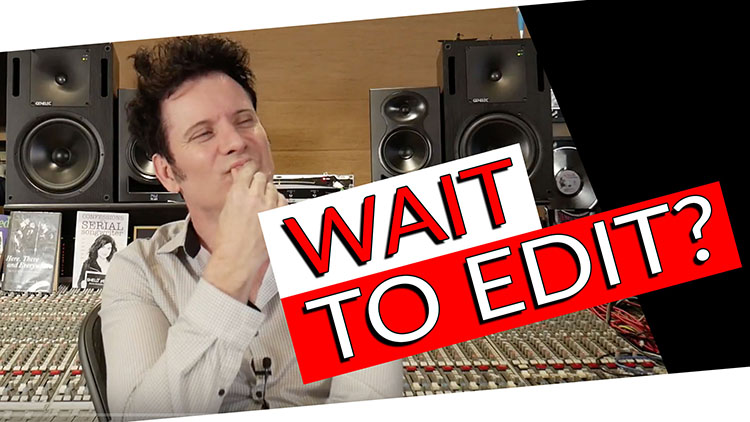FAQ Friday is our weekly roundup of YOUR questions! If you have any questions you’d like to ask, simply leave it in the comments below (or on YouTube), and I’ll do my best to answer it!
We always get a ton of great questions and this week is no exception!
When should you stop editing and start mixing?
That’s a great question! I have multiple answers to this.
First of all, when I’m recording, if I need to make edits I’m sort of doing that as I go. For example if one of the guitar lines is slightly behind, I might just want to push it forward or if something’s too forward I may want to lay it back.
There are very few albums that I do where I wait to edit until the end.
If it’s me mixing my own material and if there was any editing that needed to be done, it’s usually done before I mix.
However, if you’ve been watching my live streams, you’ll notice that I’m doing quick edits as we go – I’m cleaning it up a little bit- making the signal a little bit brighter!
What happens when things get a little brighter? Well, transients get more pronounced. Snaps on snare drums, hand claps, acoustic guitars; they all become more pronounced. What happens is you get a more apparent flamming between things, so you start to get a little bit more focused in on the editing.
My second answer would be that I edit as I mix as well because things will become a little bit more evident. I’m always editing as I’m recording and I may do additional editing as needed during a mix.
I’m doing an album at the moment that is a production disaster of work and I’m doing so much stuff to edit it to make it usable before I can mix. This is what I would do first if you’ve been handed something that is a bleeding mess to mix, and trust me, that happens quite often!
We’ve all been in that situation and you will continue to be in it! (That’s just the way it works!) In that instance it’s tough. I identify major issues and I go in there and fix them right away, whether it’s drum editing or putting in fades and stuff- there’s certain things I know have to be done before I can mix.
It really just comes down to: is it an audible problem? You should be editing with your ears and not with your eyes. If you’re looking at a song and literally need to have everything on the grid, you will be editing forever trying to make everything perfectly tight. But if you listen to it and just fix things that you can hear, that is the best way of going about it.
My advice to you is: edit as you go and then edit as you need while you’re mixing. If it’s stuff that’s being handed to you, try to take a global view and only edit what you’re hearing.
During this episode of FAQ Friday I answer the following questions:
• When should i stop editing and start mixing?
• How do you make sounds that slowly become louder to make a transition from a quiet verse to a loud chorus?
• How do you behave with the grid and editing? All must be in grid or better to leave everything free?
• How do you go about mixing accapella? I imagine you wouldn’t eq each voice like you would a lead vocal. Should you give each voice part its own frequency range so it has a place in the mix?
• Do you have any recommendations as to which headphones would be good for mixing? Closed v open, impedance, brand, make etc.,
• Could you explain how you handle mixing songs that have different tempos throughout, and perhaps how you manage tempo transitions?
